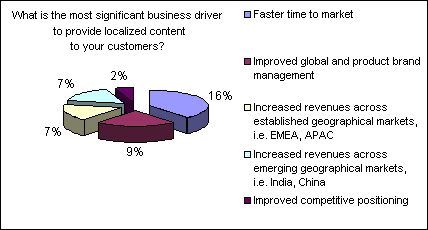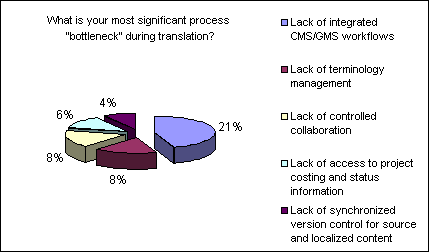This was one of my favorite quotes from Sun’s April 10th presentation at Gilbane San Francisco, titled Managing Content Globally: What Works, What Doesn’t. Given by Jed Michnowicz, Engineering Lead, and Youngmin Radochonski, Globalization Program Manager, the presentation opened the LISA Forum on Day 1 of the conference.
Jed and Youngmin nailed it when they defined three key components of a global content platform: content management, translation, and delivery. As they outlined the struggles of legacy challenges in all three areas, a pattern of checklist items for the audience quickly surfaced. Lack of metadata. “Siloed” mindsets, workflow, and content repositories. Static Web server content delivery. Inconsistent messaging. Slow time to market. Cost overruns. As moderator, it is always interesting to scan the faces in the crowd for reactions. During this part of the presentation the response was palpable: “got that, got that, and yes, definitely got that.”
They also nailed it when they moved to the “here’s the good news” part of the presentation. Global awareness throughout the organization. Process alignment and consistency. Separation of content from presentation. Translation memory management and sharing. Integrated content and translation workflows. Automated, Web services-based content distribution. They described what is most definitely a “Level 2+” integration from a technology perspective. At this point, the audience response was equally palpable: “want that, want that, and yes, definitely want that.”
Wrapping up the success story with lessons learned (according to people, process, and technology categories; be still my heart!) Jed and Youngmin also noted that Sun, like most organizations, is still learning. Some of the questions they posed — which we will continue to explore on this blog — included:
- What takes precedence when solving for people, process and technology?
- What is the proper globalization strategy and who defines it?
- Can a single solution work for everyone?
On behalf of The Gilbane Group and LISA, we thank these excellent presenters for a job well done. This presentation will be available here this week; check out one of my other favorite quotes emblazoned on the t-shirt on the last slide.


